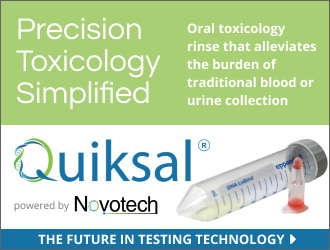
Will Help Schools Navigate Reopening, Share Best Practices, and Access Billions in Funds to Support Safe School Reopening Through the American Rescue Plan
Following President Biden’s signing the American Rescue Plan into law, the U.S. Department of Education announced additional details on its plans to support schools in safely returning to in-person instruction. The Department of Education will provide best practices, guidance, and support to schools as they navigate reopening, while the American Rescue Plan will provide $130 billion to help schools implement these safe reopening measures and address the academic, social, and emotional needs of students. These efforts are part of U.S. Education Secretary Miguel Cardona’s priority to support schools, campuses, and students across the country and were outlined in President Biden’s Executive Order on Supporting the Reopening and Continuing Operation of Schools and Early Childhood Education Providers.
“Students learn best in schools,” Secretary Cardona said. “Our top priority is to make sure America’s schools continue to reopen as safely and as quickly as possible, and our job is to provide states, districts, educators, and families with the resources they need to do so. Now that the American Rescue Plan has been signed into law, we can get states and districts additional funding to reopen safely and address the needs of students. These actions will provide schools, educators, and families with additional support to make sure our students and communities emerge from this challenge stronger.” While Cardona recognizes that there’s no one-size-fits-all solution to reopening schools, the Department will work with state and local communities to ensure schools and campuses are quickly able to access and utilize funds from the American Rescue Plan and know how to utilize them to support their reopening efforts and address the needs of students.
Today’s announcements include additional information on the steps the Department is taking to help schools and communities share best practices around reopening and how to implement effective solutions.
The Department will convene a virtual National Safe School Reopening Summit this month to share best practices, discuss successful mitigation and reopening strategies, and learn from students, educators, and other experts. The Summit will offer a forum for researchers and practitioners to discuss strategies for addressing the social, emotional, and academic needs of students—with a focus on those students most underserved—as many schools across the country continue their work to safely reopen. It will also feature experts from Centers for Disease Control and Prevention (CDC) and the U.S. Department of Education who will discuss how schools can safely reopen and how the Biden Administration is providing support and resources to schools, educators, and students as they work to reopen safely and address student needs.
The Department is launching the “Safer Schools and Campuses Best Practices Clearinghouse” called for in President Biden’s Executive Order, starting with the “Lessons from the Field” webinar series. The Clearinghouse will highlight lessons learned and best practices that can help schools and districts identify opportunities to best utilize American Rescue Plan funds to meet their unique needs. The Clearinghouse will include resources that target the needs of students and teachers, faculty and staff in early childhood programs, K-12 schools, and colleges and universities in three main areas:
- Safe and Healthy Environments: School and campus approaches to implementing the Centers for Disease Control and Prevention’s (CDC) recommended mitigation strategies and preparing for and sustaining in-person operations safely.
- Providing Supports to Students: School and campus strategies to meet student social, emotional, mental health, academic, financial, and other needs, including access to food and other basic needs.
- Teacher, Faculty, and Staff Well-Being, Professional Development, and Supports: School and campus strategies to address the social, emotional, health, and other needs of teachers, faculty, and staff.
The Clearinghouse’s “Lessons from the Field” webinar series will begin on March 31. The Department welcomes lessons learned and best practices from the field for consideration for the Clearinghouse, including those with an educational equity focus. Submissions should be sent via email to: Bestpracticesclearinghouse@ed.gov. Please visit https://bestpracticesclearinghouse.ed.gov/ for more information about the Clearinghouse.
The Department will release Volume 2 of the K-12 COVID-19 Handbook for districts, schools, and educators in early April. This volume will provide research-based strategies to address the impact of COVID-19 on students, educators, and staff, especially for historically underserved students and communities that have been hit hardest by the pandemic. In February, the Department released the first volume of the COVID-19 Handbook, which provided educators and staff with practical examples, roadmaps, and tools to implement CDC’s K-12 operational strategy for in-person learning, including the recommended five key mitigation measures. Since the release of Volume 1, the Department and CDC have transmitted the handbook and offered technical assistance to educators; state and local elected officials in every state and territory, including governors, chief state school officers, state boards of education, state legislative leaders and staff, mayors, and superintendents; and thousands of stakeholder organizations across the country.
In addition to the American Rescue Plan, these actions are key parts of the Biden Administration’s national strategy to provide states, early childhood providers, schools, districts, and campuses with the support and resources they need to reopen safely for in-person instruction. Last week, the President also directed all U.S. states and territories to prioritize vaccinations of teachers and staff in Pre-K-12 schools and childcare providers throughout this month, with the goal of all providing these frontline essential workers with at least one vaccine dose by the end of March.


Chattooga Opinions
The Joy of the Journey: Faith Through Uncertainty

Chattooga Lifestyle
Visit a Georgia Public Fishing Area for Fun and Fishing

Chattooga Local News
Georgia DOT Seeks Public Input on Proposed Summerville Bypass

Bulloch Public Safety
7/11/2025 Booking Report for Bulloch County

Bulloch Public Safety
06/23/2025 Booking Report for Bulloch County

Bulloch Public Safety
06/30/2025 Booking Report for Bulloch County

Bulloch Public Safety
06/16/2025 Booking Report for Bulloch County

Bulloch Public Safety
06/19/2025 Booking Report for Bulloch County

Bulloch Public Safety
7/09/2025 Booking Report for Bulloch County





